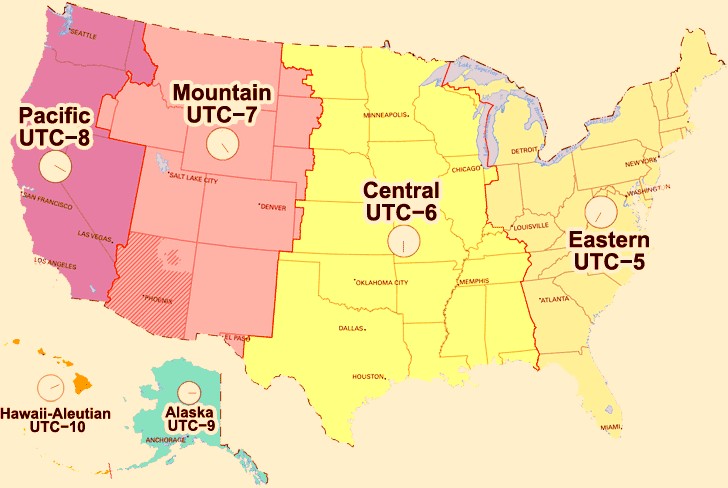The United States of America spans across a vast geographic area, encompassing various regions, climates, and cultural diversities. With such an expansive territory, it is no surprise that the country operates on multiple time zones.
Understanding the time zones of the United States is crucial for coordinating activities, scheduling appointments, and maintaining efficient communication across different regions. In this article, we will delve into the details of the time zones in the USA, shedding light on the fascinating variations that exist within this vast nation.
Exploring the Time Zones of the United States
1. Eastern Standard Time (EST):
The Eastern Standard Time (EST) zone covers the easternmost regions of the United States, including cities such as New York, Boston, and Miami. This time zone is five hours behind Coordinated Universal Time (UTC-5) during standard time and four hours behind (UTC-4) during daylight saving time. Daylight saving time is observed from spring to fall, during which clocks are set forward by one hour to maximize daylight in the evenings.
2. Central Standard Time (CST):
Moving towards the center of the country, we encounter the Central Standard Time (CST) zone. Major cities in this time zone include Chicago, Dallas, and New Orleans. The Central Standard Time zone is six hours behind Coordinated Universal Time (UTC-6) during standard time and five hours behind (UTC-5) during daylight saving time.
3. Mountain Standard Time (MST):
Continuing westward, we arrive at the Mountain Standard Time (MST) zone. This time zone encompasses states such as Colorado, Arizona, and Montana. During standard time, the Mountain Standard Time zone is seven hours behind Coordinated Universal Time (UTC-7), while during daylight saving time, it is six hours behind (UTC-6). However, it’s important to note that Arizona does not observe daylight saving time, remaining on Mountain Standard Time throughout the year.
4. Pacific Standard Time (PST):
The Pacific Standard Time (PST) zone covers the western coast of the United States, including cities like Los Angeles, San Francisco, and Seattle. This time zone is eight hours behind Coordinated Universal Time (UTC-8) during standard time and seven hours behind (UTC-7) during daylight saving time.
5. Alaskan Standard Time (AKST):
As we move towards the northern parts of the country, we encounter the Alaskan Standard Time (AKST) zone. Alaska, being quite distant from the contiguous states, operates on its own time zone. Alaskan Standard Time is nine hours behind Coordinated Universal Time (UTC-9) during standard time and eight hours behind (UTC-8) during daylight saving time.
6. Hawaiian-Aleutian Standard Time (HST):
Finally, we arrive at the Hawaiian-Aleutian Standard Time (HST) zone, which includes the state of Hawaii and a small portion of the Aleutian Islands in Alaska. This time zone is ten hours behind Coordinated Universal Time (UTC-10) during standard time and does not observe daylight saving time.
Conclusion
The United States, with its vast size and diverse geography, operates across six primary time zones. From the Eastern Standard Time on the East Coast to the Hawaiian-Aleutian Standard Time in the Pacific, each time zone serves its respective regions, accommodating the differences in sunrise, sunset, and overall time.
Understanding “how many time zones are there in the us” is crucial for effective coordination, planning, and communication within the United States. Whether it’s scheduling a meeting or catching a flight, being aware of the time zones ensures smooth interactions across the nation.

